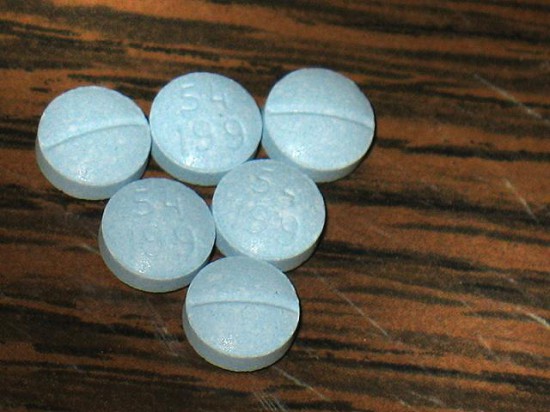OTTAWA––The federal government wasted no time in re-opening the barn doors on Oxycodone, one of the most widely abused prescription drugs in Canada. The day following the expiry of Purdue Pharma’s patent on Oxycodone, the active ingredient in the painkiller OxyContin (aka hillbilly heroin), Health Canada announced the go-ahead for six companies to produce generic versions of OxyContin.
The lineup of those loudly encouraging Federal Health Minister Leona Aglukkaq to disallow the drug back onto Canadian pharmacy shelves included the United States, all of Canada’s provinces and territories, the Canadian Medical Association (CMA), the Ontario Medical Association (OMA), the Assembly of First Nations (AFN) and the Ontario Association of Police Chiefs; all to no avail.
“The OMA, the CMA and most physicians have come out against it,” said Manitoulin Health Centre chief of staff Dr. Stephen Cooper. “They have requested that the federal government not approve the generic production of long-acting OxyContin.”
“We, the regional chiefs, myself and deputy grand chiefs have asked Minister Aglukkaq not to put it on the market,” said Anishinabek Nation Grand Chief Patrick Madahbee, whose organization is included in the stand against generic OxyContin. “Ontario Health Minister Bev Matthews has also written a letter to the federal minister asking her to not allow the generics. In fact, 11 different jurisdictions have asked the federal government not to go this route. We are opposed to it because of the addictive nature of the drug, the criminal element that addiction encourages bringing major harm to our communities, with numerous deaths, home invasions. It has all fallen on deaf ears.”
Minister Aglukkaq maintained through spokespersons that law compelled her to allow the generic production of the drug as it is considered safe for its intended use.
The minister threw the issue back at the medical community saying that the drug would not be available for abuse if doctors refrained from prescribing it.
But there are concerns that insurance companies could regard the generic OxyContin as a viable substitute for its name brand replacement OxyNeo.
OxyNeo is formulated to be harder to crush and liquefy, making the new drug much more difficult to inhale up the nose or inject. Crushing OxyContin defeats the time-release aspects of the drug, delivering a heroin-like euphoria.
OxyContin was originally marketed as being less susceptible to addiction and abuse, but the ability to overcome the time release factor, and some would argue its over prescription, quickly made OxyContin the drug of choice to abuse among poor and rural communities, hence its nickname ‘hillybilly heroin.’
OxyContin was the favourite target for both organized crime and desperate addicts to engage in prescription fraud, often by stealing prescription pads and forging doctor’s signatures to acquire the drug from pharmacies. Most pharmacies have instituted protocols to try and prevent such methods.
But with prices far in excess of $80 for a single pill, much of the black market supply finds its way onto the street through people with legitimate prescriptions. When someone on a very limited disability pension suffering from intense pain comes up short to pay the bills at the end of the month, the temptation to raise a few quick bucks by selling a few pills is hard for some to resist.
There are well-documented instances where criminals have targeted those in the community they know are likely to possess pharmaceuticals that can be abused, following them home and burglarizing them or engaging in home invasions, sometimes with fatal results.
Manitoulin OPP Community Services Officer Constable Alan Boyd noted that one of the more common routes for prescription drugs to find themselves onto the market is through crimes of opportunity, where friends of grandchildren accompany them on a visit and raid the medicine cabinet.
“We advise people to not keep drug medication in obvious and unsecured locations within the home,” said Constable Boyd during a seminar on preventing drug abuse in the community. The officer also advised people not to advertise their possession of such drugs in public conversations or on the Internet in places like Facebook. “Don’t make yourself a target of these people.”
Constable Boyd noted that addiction could overcome the normal reticence of people to engage in criminal behaviour.
The issue among remote First Nations communities is particularly dire, Nishnawbe Aski Nation (NAN) Deputy Grand Chief Alvin Fiddler, who represents 49 First Nation communities within Northern Ontario, said that his communities have experienced epidemic levels of addiction to OxyContin since 2009. He estimates about 70 percent of people in NAN are hooked.
“Not a day goes by that we don’t get a call from one of our communities, from one of our chiefs, one of our front line workers, telling us about an incident related to this epidemic,” Deputy Grand Chief Fiddler said during a December 4 press conference in Ottawa.
Minister Aglukkaq has declined interview regarding First Nations concerns, but released a statement saying, “I recognize that this is a serious issue in First Nation communities, which is why I announced additional funds this summer to support community-based treatment programs in Ontario.”
Strangely, the drug epidemic may have arisen for naught, as there is a growing body of evidence that pharmaceutical approaches to long-term pain management may not be the panacea that some drug companies would prefer us to believe.
“There seems to be a movement that there is not great evidence that it (OxyContin) is effective for pain management over the long term,” said Dr. Cooper.





